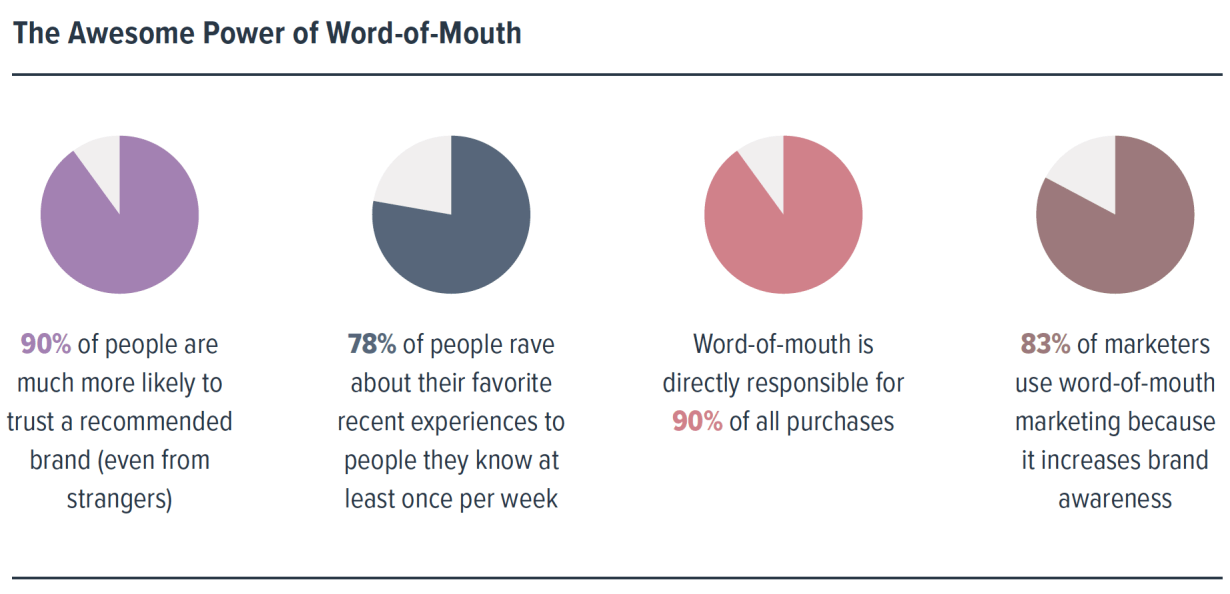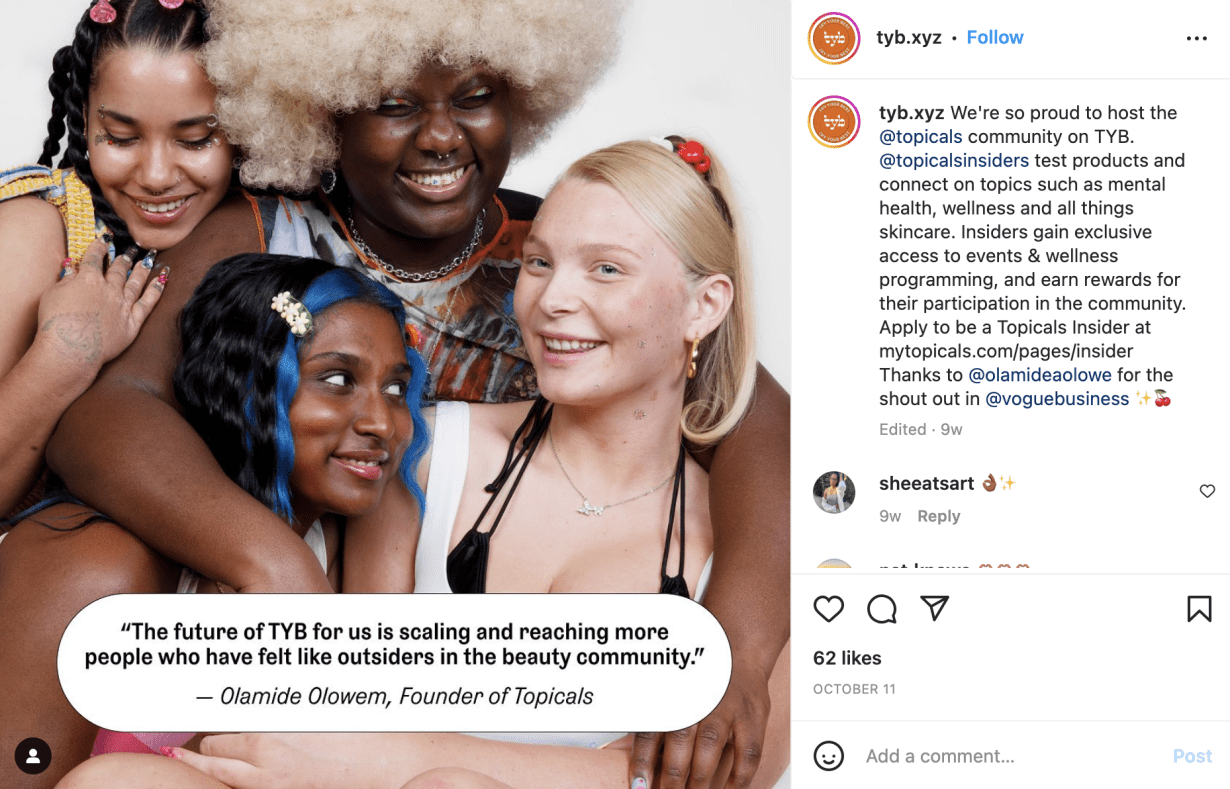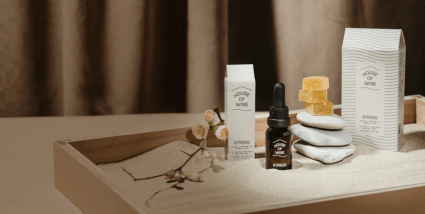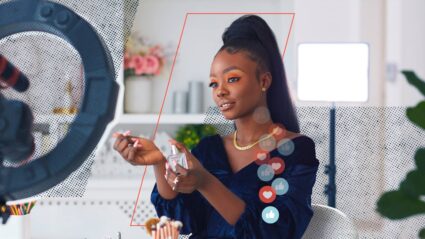As media environments become increasingly saturated, brands need to find ways to break through. On the social media side of the equation, many marketers have turned to influencer partnerships to expand impression opportunities, make connections without being intrusive, and communicate brand value propositions authentically.
Influencer marketing is already a part of a large number of brand marketing strategies—and it’s here to stay. But there are more ways to collaborate with partners and scale branding efforts than traditional approaches to influencer relationships.
We call the next evolution brand ambassadorship. While celebrities or influencers can act as brand ambassadors (and that’s a great way to deepen those relationships), that’s not the end game. On the contrary: a mature brand ambassador strategy leverages the fandom and advocacy of your customers to weaponize and scale the power of word-of-mouth and drive results.
Let’s take a look at how you can build a brand ambassador program, inspire your customers to promote their experiences, and catalyze that network effect.
What is a brand ambassador?
A brand ambassador is someone who has an established relationship with a brand and uses the products they’re promoting. Brand ambassadors drive engagement and can act as an extension of the brand’s identity through words and actions.
Almost everyone is a passive brand ambassador for something, like companies that make products you love or have a mission that you align with. But you might not go out of your way to evangelize those feelings unless someone gives you a compliment or asks for a recommendation.
Turning that inbound relationship outbound is what an ambassador does for a brand—the practice that we refer to as active brand ambassadorship. An active brand ambassador is someone who loves your brand and actively promotes it within their network.

Source: SEMrush
What does a brand ambassador do for a brand?
Where things get interesting from a marketing perspective is active brand ambassadorship. An active brand ambassador is someone who loves your brand and actively promotes it within their network. That could be something as simple as leaving a glowing review for a restaurant you just tried or posting your new sneakers in your Instagram story, or as complex as a structured program officially affiliated with the brand.
The important part is that these acts of active ambassadorship humanize your brand. Remember: consumers trust other people more than they trust information from a brand itself; they’re more receptive to receiving information from a human being.
In fact, according to data from SEMrush, 90% of people are more likely to trust a recommended brand, even if that recommendation is from a stranger.
What to expect from a brand ambassador
Brand ambassador relationships can be structured in many different ways and include a wide range of activities. At the smallest scale, a new brand might work with a handful of select ambassadors, providing them with free products in exchange for an honest review. These people might be influencers or microinfluencers—but they might also be ordinary people who are passionate about what they do and eager to talk about what’s new.
On the other hand, bigger brands might invest in relationships with established influencers. They might even recruit their own employees to discuss what they genuinely love about the products and services they work on. Whatever your brand ambassador relationship looks like, it should always strive for authenticity.
How brand ambassadors build trust and authenticity
As creator and influencer partnerships become more mainstream, brands need to take a look at why exactly they’re so powerful to get an idea of what’s likely to come next. You need to read the consumer preference tea leaves—the aversion towards ads, the dominance of “cult brands” with significant fandoms, and the rise of social platforms like TikTok and BeReal that emphasize person-to-person connection.
Content creators can help you capture some of that authenticity when it comes to asset production, and influencer marketing can help you put a human face on your brand, but unlocking your everyday brand ambassadors has even greater potential when it comes to driving customer acquisition, retention, and long-term value for the company. Brands that embrace the real and the human are going to win—and brand ambassadorship will be an essential component.
Do brand ambassadors get paid?
By definition, brand ambassadors are compensated, but it’s often not in the form of simple cash payments. Brand ambassadors are usually compensated in some combination of these three ways:
- Product-based: The ambassador receives free or heavily-discounted products in exchange for an honest (keyword: honest) review, or for using it themselves.
- Incentives: The ambassador gets other incentives, such as exclusive merchandise or a discount for referring friends to sign up for a service.
- Paid: The ambassador gets paid to promote the brand. Many brands pay their ambassadors for more labor-intensive promotions like filming an in-depth video review.
Brand ambassador examples: capturing people power
Brand ambassadors can cast your message far and wide by publicizing your brand in their own networks, on social media and/or in their real-life circles.
Marketers can inspire ambassadorship more strategically by inviting customers to participate in the growth and development of the brand itself; having a stake in the brand and feeling that sense of ownership goes a long way in building a cohort willing to evangelize on your behalf.

Source: Something Navy
Case in point: Something Navy, a lifestyle brand valued at $45 million founded by blogger-turned-influencer Arielle Charnas, polls its 1M+ followers on key decisions around the brand, ranging from the color of a blazer to whether or not the brand should open a new retail store in a key market. That process has resulted in a devoutly loyal following (even through certain PR crises) that is outspoken about their love of the brand on social media.
This type of community engagement makes fans feel like they’re part of the journey. And as we consider the effects of the current period of economic uncertainty on consumers, adding a non-transactional aspect to the relationship your brand is building with your customers is increasingly important to stay top-of-mind and earn their dollars when they feel they can make a purchase.
Ty Haney, creator of the clothing brand Outdoor Voices, recognized the value this deeper level of community building brought to her brand and decided to take it a step further.
“Consumers want to influence the products they purchase, they want the brands they love to reflect their personal values and they want something to show for it. Making your community an extension of your team and sharing value with them is a new model we’re calling ‘community-integrated-commerce.”
She launched Try Your Best (TYB), a Web3 community platform built so brands and consumers can collaborate and win together. TYB “gives brands a direct line to engage and reward their fans for meaningful participation, in exchange for covetable collectibles, brand coins, and access to exclusive experiences.”
TYB looks to streamline the process of brand ambassador recruitment, engagement, and incentivization so it’s easier for brands and consumers.

Source: Try Your Best
For brands in more heavily regulated industries, brand ambassadorship is often front and center in their strategies. House of Wise, a CBD brand, had no choice but to rely on brand ambassadorship to help build its brand. Because the company’s products fall into what Meta and Google consider “vice” categories, they are prohibited from advertising across those environments. But there are no such restrictions on organic content, leading House of Wise’s founder Amanda Goetz to establish an affiliate model, but with a twist.
House of Wise recruited over 400 people, educated them on their products, and paid them for however many items they sold. House of Wise achieved $1 million in sales in its first year without paid advertising on Google and Facebook.

Source: Hashtagpaid.com
“The affiliate model caught my attention for two main reasons. It brought an aspect of community to House of Wise, something I had always envisioned as a core part of the company.
And it was a way to build trust and confidence in our products. The cannabis market can be confusing, and I knew it would be important for women to hear about our products from people who had used them and achieved the desired results in the form of more sleep, better sex, and less stress.”
How to start building your brand ambassador strategy
Have you ever posted a story about a great meal at a restaurant on Instagram and had the restaurant comment or share your story on their company page? Or maybe you had a question about a product you posted on social media and got a response from the brand itself.
It’s funny how something as simple as recognition can generate that feeling of being seen and deepen a relationship between brand and consumer. And there are ways that brands can get started now to test the waters in establishing brand ambassadors as a long-term marketing strategy.
What are brand advocates, and how are they different from brand ambassadors?
Brand advocates are similar to brand ambassadors, but they’re not compensated by your brand. Someone who tells their friend about their great experience at your dental practice is a brand advocate. So is someone who takes the free sticker that came with their new purchase and puts it on their water bottle (that sticker might technically count as compensation, but you see the point).
In some ways, brand advocates are the most valuable influencers of all. Advocates are in it purely because they love your products or services and want to tell people about them. If someone loves your brand enough to give you social proof among their own circle, that’s high praise, and you can expect other people to be listening.
Of course, if those listening are birds of a feather with your advocate, they’re also probably part of the audience you’re trying to reach. In an ideal scenario, that’s the beginning of a virtuous cycle, where one brand advocate goes on to convert another, until you’ve got legions of evangelists who can’t wait to talk about how your brand excels.
How to create brand advocates and ambassadors for your company
Start by taking a look at existing customer touchpoints for opportunities to increase or deepen engagement. That’s the first step toward cultivating advocacy and ambassadorship. And these activities don’t necessarily have to come with a high price tag. Here are a few ideas that have paid long-term dividends:
- Organic social polls on topics related to the product or company roadmap
- Encouraging ratings and reviews
- Consumer surveys
- Loyalty programs
- UGC content, and the amplification of those customer testimonials via marketing creative (this pays dividends across our agency client performance)
Key metrics to track for brand ambassador program success
As with any other marketing strategy, it’s important to measure the results of brand ambassador tactics to be sure they’re driving the outcomes you want. You might track a variety of KPIs, depending on which goals matter most for your brand, but if your ambassador campaign uses the major social media channels, tracking these metrics like these is a great place to start:
- Engagement: The number of interactions, such as likes, shares, and comments, that an ambassador’s post receives.
- Reach: The number of unique accounts that have viewed an ambassador’s post.
- Conversions: The number of customers who complete the desired action (like making a purchase or signing up for an email list) as a result of an ambassador’s post. It can be notoriously tough to track the source of conversions, especially with the demise of third-party tracking, which makes solutions like data clean rooms more valuable than ever.
In the years to come, marketing performance may well be defined by access to community and customer evangelism. If you haven’t started already, take a deep dive into your customer base and start testing ways to engage people who are excited about actively participating in your brand mission.







Responses